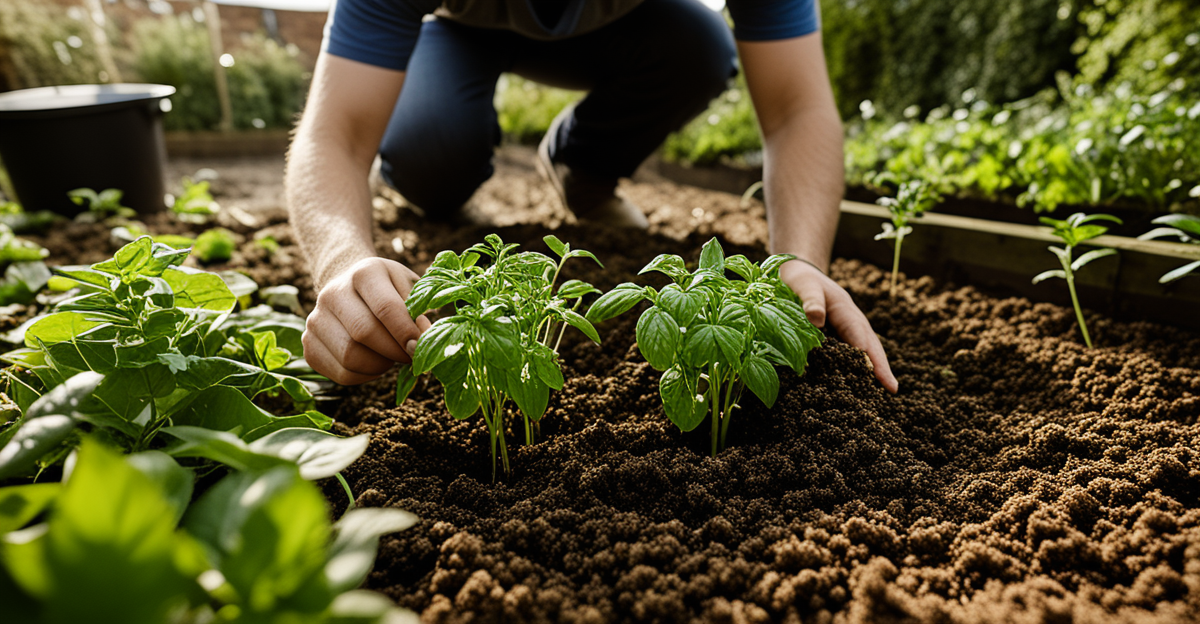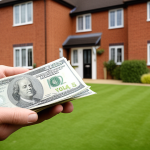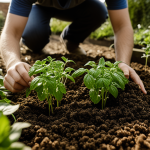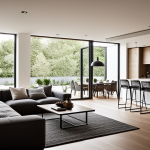Practical Steps for Greener Living Spaces
Creating an eco-friendly home starts with prioritising actions that deliver the greatest local impact. In the UK, focusing on improving insulation and investing in energy-efficient appliances can significantly reduce energy consumption and bills. Upgrading your loft and wall insulation limits heat loss, a simple step that pays off quickly with improved comfort and lower carbon footprint.
Opting for sustainable living doesn’t have to be costly or complicated. UK green home solutions often recommend low-cost adaptations like draught-proofing doors and windows, sealing leaks, or installing LED lighting. These are widely accessible changes that offer immediate benefits and can be done without extensive renovations.
Also read : How Can You Transform Your Living Space into a Multi-Functional Area?
For those considering bigger projects, combining these simple steps with efficient boilers or solar panels maximises gains. Engaging with local initiatives and suppliers ensures your eco-friendly home tips align with regional climate goals and resources. By taking practical, manageable steps, anyone in the UK can make their living space greener and more sustainable without disruption or excessive expense.
Eco-Friendly Renovation Upgrades
Small changes that make a big difference
This might interest you : How Can We Transform Our Living Spaces to Reduce Stress?
Upgrading your home through eco-renovation focuses on enhancing energy efficiency and reducing environmental impact. Start by improving insulation, such as installing thicker wall insulation or double glazing windows, which cuts heat loss and reduces energy bills. Draught-proofing gaps around doors and windows also prevents unwanted cold air, making your home cosier while lowering heating needs.
Replacing outdated heating systems with energy-efficient boilers and smart controls is a key green home improvement. Modern boilers use less fuel and operate more effectively, meaning less carbon output and cost savings. Smart thermostats help optimise heating schedules, aligning usage with your lifestyle and further avoiding waste.
When redecorating, select sustainable renovations UK experts recommend, such as non-toxic, low-VOC paints and eco-friendly materials. These reduce indoor air pollution and environmental harm during production. By combining these upgrades, homeowners can significantly enhance comfort and energy performance without extensive structural work. This practical approach to eco-friendly renovation promotes sustainable living and advances UK green home solutions with tangible benefits.
Choosing Sustainable Materials for Your Home
Selecting sustainable materials is a cornerstone of creating a genuinely eco-friendly home. Prioritising eco-friendly building materials like FSC-certified wood ensures the timber comes from responsibly managed forests, reducing deforestation impacts. Bamboo offers a fast-growing, renewable alternative, ideal for flooring or furniture. Recycled metals not only lower resource extraction but also cut down manufacturing emissions. Incorporating natural fibres such as wool or hemp for insulation or textiles further supports a green interior.
When sourcing materials, scrutinising their origins and environmental footprint is essential. Materials that require less energy to produce or transport contribute significantly to lowering your home’s carbon footprint. Exploring UK suppliers dedicated to green interiors and employing eco-friendly manufacturing means supporting the local economy while ensuring quality and sustainability.
By combining thoughtful material choices with practical application, homeowners can enhance durability and indoor air quality while embracing the sustainable living ethos fundamental to UK green home solutions. This approach balances environmental responsibility with design, making each renovation both beautiful and beneficial.
Practical Steps for Greener Living Spaces
Creating an eco-friendly home begins by focusing on actions that make the biggest local difference, such as upgrading insulation and choosing energy-efficient appliances. In the UK, these steps are among the most effective eco-friendly home tips to lower energy use and reduce bills. Improving loft and wall insulation not only keeps heat in but boosts comfort year-round.
Simple and accessible adaptations also play a vital role in promoting sustainable living. Small measures like draught-proofing windows and doors, sealing leaks, and switching to LED lighting are widely recommended UK green home solutions. These low-cost changes yield immediate energy savings and can be done without disruption.
For greater impact, combine these practical steps with larger upgrades like efficient boilers or solar panels. Together, they offer comprehensive benefits while aligning with local climate goals. Prioritising these manageable actions means anyone can advance a greener lifestyle without excessive cost or complexity, making sustainability attainable for UK homeowners.
Practical Steps for Greener Living Spaces
Taking effective eco-friendly home tips starts by focusing on improvements with proven local impact. In the UK, upgrading insulation—such as loft and cavity wall insulation—and choosing energy-efficient appliances are crucial. These measures reduce energy consumption and heating costs, making homes more comfortable and environmentally responsible.
Simple, low-cost adaptations also play a vital role in sustainable living. Widely recommended UK green home solutions include draught-proofing doors and windows, sealing leaks, and switching to LED lighting. These are accessible actions that can be implemented quickly without disrupting daily life.
Beyond these, combining small changes with larger projects like installing smart heating controls or renewable energy systems amplifies benefits. Prioritising practical and affordable steps helps homeowners collectively contribute to a greener future. These manageable interventions make sustainable living not only achievable but also rewarding, demonstrating that impactful eco-friendly home tips are within everyone’s reach.
Practical Steps for Greener Living Spaces
Focusing on eco-friendly home tips that offer the greatest local impact is essential for effective sustainable living in the UK. Upgrading insulation remains a top priority, as it significantly reduces heat loss and energy bills. Combining this with energy-efficient appliances maximises savings and environmental benefits, aligning well with recommended UK green home solutions.
Simple, low-cost adaptations like draught-proofing windows and sealing leaks continue to provide powerful improvements. These steps are easily accessible and widely recommended, making sustainable living achievable without complex renovations.
Larger projects such as installing smart heating controls or renewable energy systems build on these foundations, offering long-term advantages. Emphasising practical and manageable interventions allows homeowners to adopt eco-friendly habits sustainably. This layered approach—starting from essential insulation and moving to smart appliances and energy management—ensures each action complements overall home efficiency improvements while supporting the UK’s climate goals.
Practical Steps for Greener Living Spaces
To effectively embrace sustainable living in the UK, prioritising eco-friendly home tips that deliver the highest local impact is essential. This mainly involves improving insulation—such as loft and cavity wall insulation—which dramatically reduces heat loss and lowers energy bills. Coupling this with energy-efficient appliances further enhances savings and aligns well with recognised UK green home solutions.
Simple, widely recommended adaptations like draught-proofing doors and windows, sealing drafts, and switching to LED lighting remain crucial. These accessible, low-cost changes can be implemented swiftly and with minimal disruption while producing immediate energy reduction benefits.
For those ready to advance their eco-friendly efforts, combining these smaller changes with larger projects—like installing smart heating controls or renewable energy systems—multiplies effectiveness. This layered approach encourages sustainable living habits that are practical, affordable, and impactful. It ensures each intervention contributes to broader energy efficiency goals without overwhelming homeowners.
By focusing on manageable, strategic steps, anyone in the UK can transform their home into a greener space that supports the environment and reduces costs simultaneously.
Practical Steps for Greener Living Spaces
Focusing on eco-friendly home tips that deliver significant local impact is key to effective sustainable living in the UK. Prioritising loft and cavity wall insulation reduces heat loss and lowers energy consumption, making homes more comfortable year-round. Pairing these upgrades with energy-efficient appliances enhances savings and complements core UK green home solutions.
Widely recommended low-cost adaptations such as draught-proofing doors and windows, sealing leaks, and switching to LED lighting are practical first steps. These accessible measures require minimal effort yet yield immediate energy and cost savings, supporting sustainable habits without major renovation.
Beyond quick fixes, integrating smart heating controls or renewable systems like solar panels builds on this foundation. Gradual adoption of these technologies maximises efficiency while fitting individual budgets and lifestyles. This stepwise approach helps homeowners achieve eco-friendly goals without overwhelming complexity.
Implementing these manageable changes—insulation, efficient appliances, and smart systems—jointly contributes to reducing carbon footprints and utility bills. Combining them with the simplicity of everyday energy-saving practices guarantees a resilient, greener living space aligned with UK priorities.







